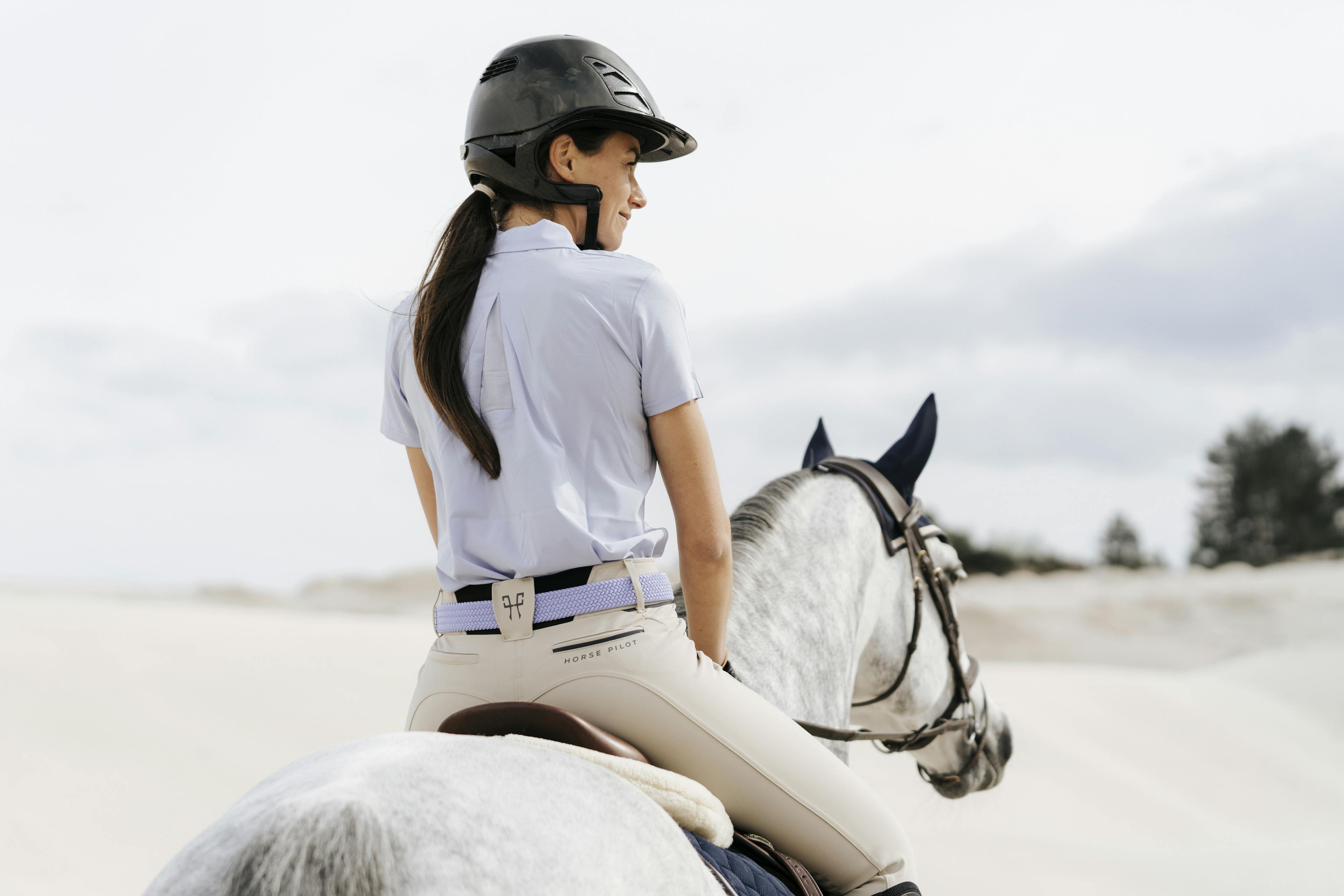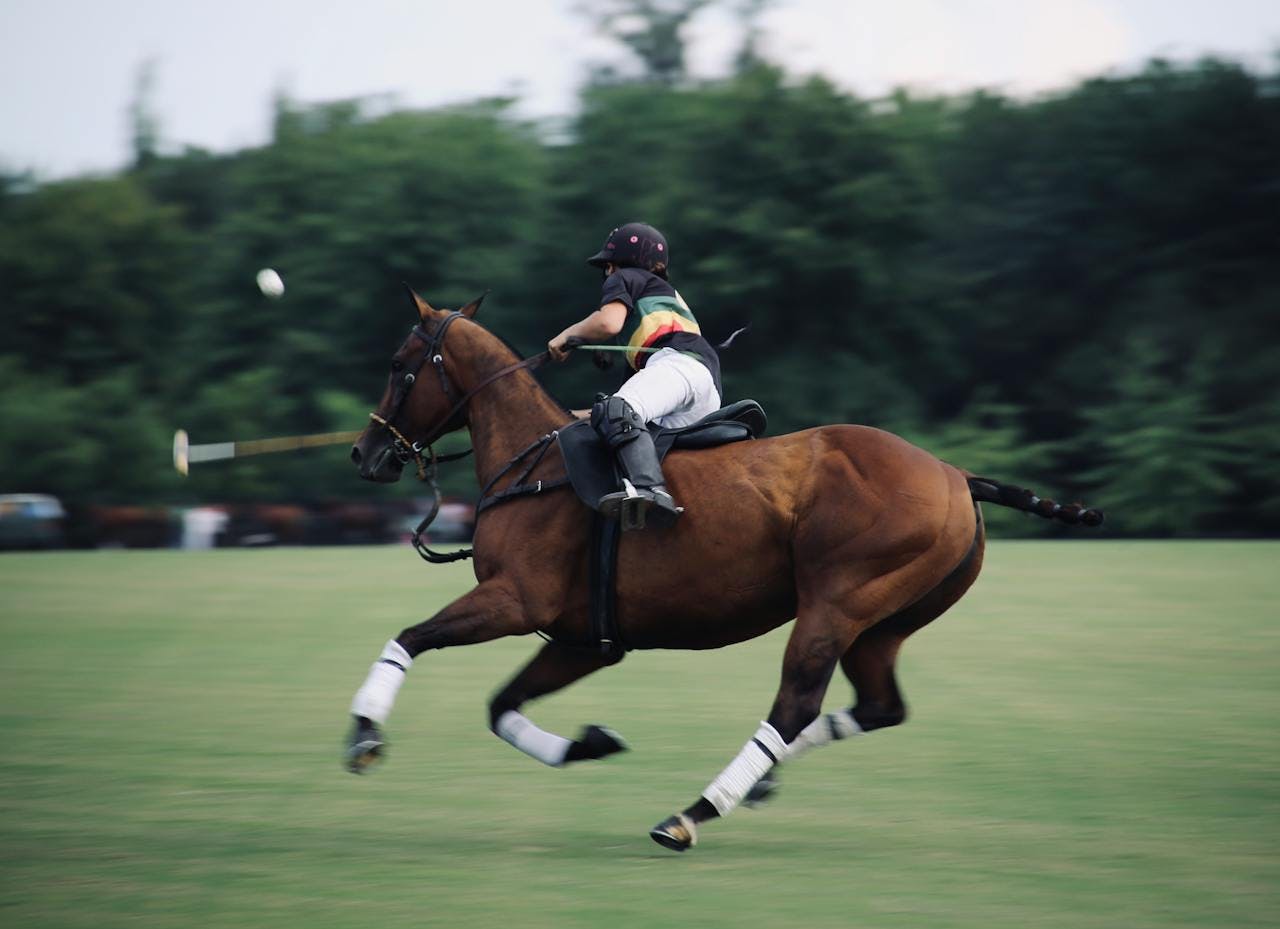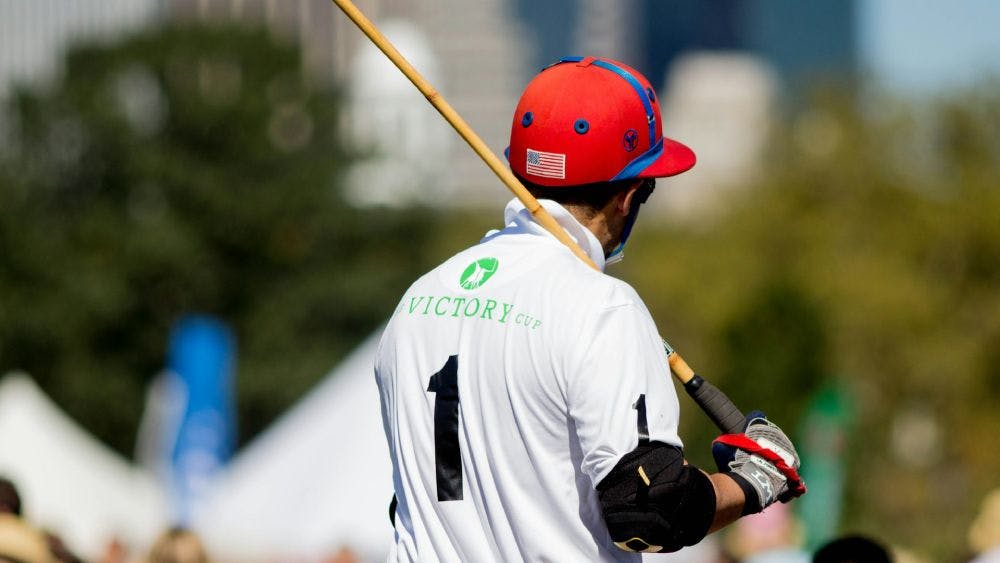What is polo ?

Polo is often perceived as the sport of kings. In reality, it's a dynamic and exciting team equestrian sport. It is accessible to all who are prepared to invest in learning its rules and techniques. With a rich history that spans continents and eras, polo combines equestrian skill, team strategy and speed. Every match is a spectacular experience, for players and spectators alike.
What is equestrian polo?
Polo is a captivating sport that has spanned the ages and cultures.
Polo : an equestrian team sport
Polo is an equestrian ball sport played between two teams on horseback. Each seeks to score goals by hitting a small ball into the opponent's goal, using a long mallet. This equestrian sport is renowned for its blend of speed, strategy and elegance. It requires exceptional coordination between rider and mount.
Origin and history of polo
Polo’s deep roots form a fascinating journey. Time and different cultures have shaped this ancient sport into what it is today.
The first mentions and the birth of polo
Polo is one of the oldest known team sports. Its origins date back over 2,000 years to Persia, where it was initially a training exercise for cavalry. These ancient matches were not just a sport, but a spectacle. They reflected the status and power of the players, who were often from the nobility or warrior class.
Polo through the ages: from Asia to Europe and the Americas
The game spread across Asia and was adopted by various empires. Notably the Mughals, who introduced it to India, where it was modernized before spreading to the West. It was in India, in the 19th century, that polo was formalized with standardized rules. It's also where the first polo clubs were founded.
Polo and it’s variant
Although polo today is associated with horses, it has seen variations throughout history and cultures. During imperial China, for example, polo was played on donkeys. A modern variation of the game, known as pony polo, is also played. This variation offers a more accessible approach to this equestrian activity. It is promoted by sports organizations in France.
The evolution of polo as a modern sport
In modern times, polo has evolved into an international sport. Established rules and tournaments have helped standardize the practice worldwide. Despite its reputation as an elitist sport, polo has been democratized. It is now played in many countries with dedicated clubs and associations.

Rules and procedures of a polo match
Polo is a sport that combines grace and strategy. Understanding its rules is essential to fully appreciate it.
How do I play polo?
Each polo match takes place on a large grass field, where two teams of four riders compete. The objective is simple: score goals by sending a wooden or plastic ball into the opponent's goal with a mallet.
However, polo is far from being a simple game of ball striking. Polo is governed by an international code of rules that ensures fair and safe matches. This code defines fouls, penalties and rights of way for players on the field.
The polo match
A standard match is divided into periods called "chukkas", usually lasting seven minutes. Professional matches have four, six or eight. After each goal, the teams change sides to ensure fair play. Breaks between chukkas allow players and horses to rest. Riders can also change mounts, to maintain a high level of play.
Player roles and team dynamics
Each player occupies a specific role, from attackers to defenders, and must play in harmony with his teammates. Communication is key. Players pass the ball and maneuver together, respecting the right-of-way rules and avoiding dangerous collisions. This creates a fluid, synchronized team dynamic, vital for success in the game.
Polo in sports culture and competition
Polo is much more than just an equestrian sport. A symbol of prestige and elegance, it occupies a special place in the culture and traditions of many countries.
Polo in art, literature and fim
Polo has had a long history of captivating artists, writers and filmmakers. In art, polo is frequently depicted. From Persian and Mughal paintings to contemporary works such as those by George Bellows, polo's grace and dynamism are highlighted.
In literature, polo is often used as a backdrop to explore themes of class and social status. A notable example can be found in F. Scott Fitzgerald's "The Great Gatsby". The character of polo player Tom Buchanan embodies the elite of the 1920s.
Polo has also been immortalized in film. As in "Pretty Woman" (1990), where a polo match scene serves as the backdrop for a major social event. In "Hidalgo" (2004), the main character, played by Viggo Mortensen, is introduced as a polo champion. This underlines the adventurous and noble aspect of the sport.
These representations in art, literature and film reinforce the image of polo as a sport of luxury and refinement. They underline the special relationship between the horse and rider, as well as the unique aesthetics of the game.
Iconic polo competitions and their cultural influence
The most prestigious polo tournaments are more than just equestrian events. They are showcases of equestrian tradition and refinement.
The Palermo Open in Argentina, dubbed the "World Polo Championship", attracts the world's best players. This competition combines sporting passion and Argentine tradition. The Gold Cup in the USA is famous for its glamorous atmosphere and celebrity crowd.
These competitions play an important role in polo's popularity. They offer a captivating blend of sport and social spectacle. They showcase equestrian skills and celebrate polo's traditions. In this way, they reinforce its status as an elite sport and an important component of cultural heritage.
Polo’s role in equestrian education and its heritage
Polo is also an important educational vehicle in the equestrian world. Polo schools teach the skills needed to play, as well as values such as teamwork, respect and dedication. These institutions preserve polo's heritage and ensure that it is passed on to new generations.

Equipment and strategy : polo’s winning duo
Polo is a sport where equipment plays an essential role, both for performance and for the safety of players and horses.
Essential equipment for player and horse
In polo, player and horse equipment is chosen for safety, comfort and optimum performance. Each item plays a crucial role in the efficiency of the game.
Polo’s player’s equipment
Every rider must wear a hard helmet, high boots and protective knee pads. The helmet is vital for head protection. Boots and knee pads protect the legs from impact.
Clothing plays an important role in the polo player's identity. The shirt, often colored and numbered, helps identify team members on the field.
The mallet, of course, is essential to the game. Gloves are optional, but offer a better grip. Goggles can also be used, to keep eyes clear of dust and rubble.
Polo horse equipment
For horses, protective bands or boots are essential to protect their legs from shocks. Boots are made from tough materials to offer both protection and flexibility.
The special polo bridle provides precise control, with a low noseband to avoid obstructing the horse's breathing. The saddle, with its flat seat and short flaps, ensures that the player can move freely. This is essential for handling the mallet effectively.
Preparation and game strategy
Polo horses are trained for agility and speed. They learn to respond instantly to commands in intense game situations. This training ensures their optimum performance on the field.
Players prepare physically with strength, endurance and flexibility exercises. Mental preparation, focusing on concentration and resilience, is part of the training. This helps them to remain calm and reactive during the match.
Each team develops confidential strategies, based on their players' abilities and analysis of their opponents. These tactics aim to maximize the team's strengths and exploit the opponent's weaknesses.
Polo : an equestrian discipline for amateurs and professionals alike
Polo is an inclusive riding sport that welcomes enthusiasts of all levels, from beginners to seasoned professionals
How do I get started in polo?
Some equestrian centers offer introductory courses for amateur riders. These riding clubs often provide the necessary equipment and mounts suitable for beginners. Basic instructions include mallet handling, rules of the game and riding techniques.
The emphasis is on the pleasure of safe riding. This advanced training, supervised by experienced instructors, enables beginners to develop their skills at their own pace.
Polo in competition
For those aspiring to take part in equestrian competitions, polo offers multiple levels of play. Local amateur circuits are an excellent way for the novice rider to gain competition experience.
While professional careers can lead experienced riders to international championships and recognition in the world of equestrian sport. Professional players often become iconic figures who inspire the next generation of polo enthusiasts.
The future of polo
Polo, rooted in tradition, now embraces innovation to meet the challenges of the modern world.
Polo and technological innovations
Technological advancement plays a key role in the evolution of polo. New materials make equipment safer and more comfortable. Data analysis helps optimize performance. Live broadcasts and real-time tracking make matches more accessible. As a result, a wider audience is attracted.
Horse welfare in polo
The attention paid to horse welfare is stronger than ever. Sustainable practices are adopted in breeding and training. Stricter ethical standards are being put in place. These ensure that horses are respected and protected throughout their lives.
Accessibility and popularity of polo
Polo is striving to become more accessible. Many activities and initiatives target young people and less-represented communities. The sport is also expanding into new regions, with a view to increasing its popularity and global appeal.
Polo, rich in history, embodies team spirit, respect and sporting performance. This fascinating equestrian discipline represents a worldwide community of enthusiasts and a different way of riding. It's an equestrian activity that invites discovery, whether as a spectator or a practitioner. For equestrian sports enthusiasts, polo offers a unique experience, combining the elegance of horsemanship with the excitement of competition.